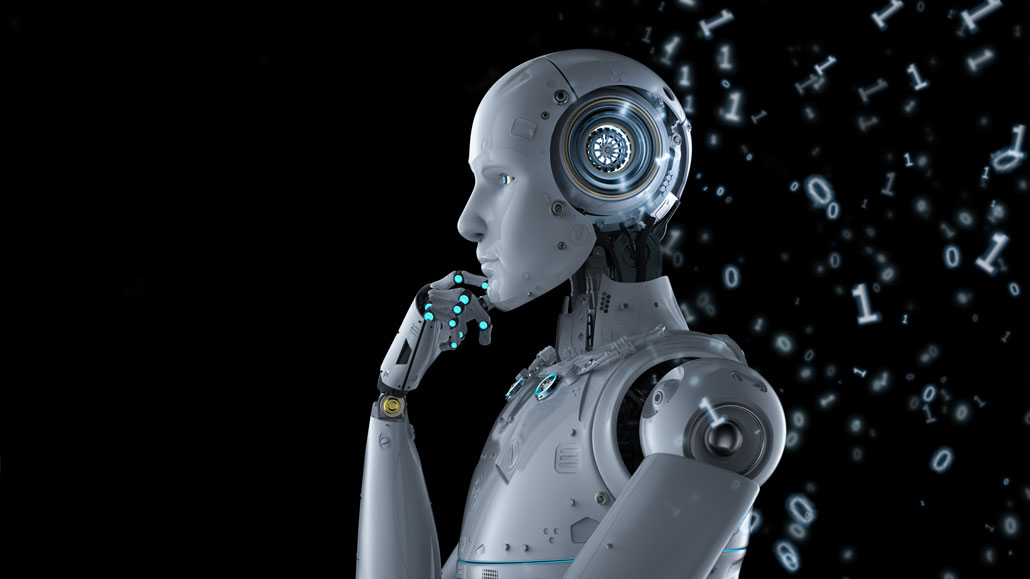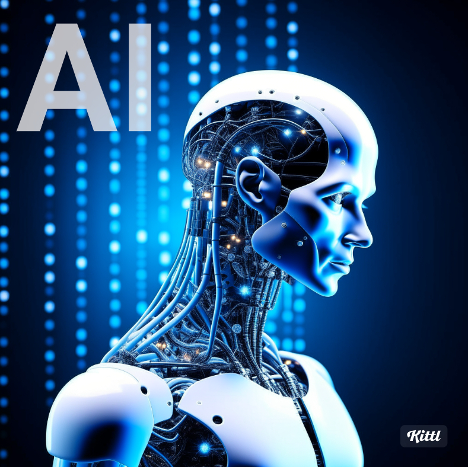The History of Artificial Intelligence (1950–2025) — Deep, Practical & Technical
The History of Artificial Intelligence (1950–2025)
A deep, technical and humanized account of how AI evolved — pioneers, algorithms, industries transformed, ethics, and what comes next.
Why this history matters: understanding AI's past helps businesses, policymakers and citizens make better decisions today. This article explains the milestone inventions, the mathematics behind major breakthroughs, examples of impact in medicine, transport and business, the ethical lessons learned, and practical guidance for adopting AI responsibly in 2025.
- 1950s — Turing & Dartmouth
- 1960s–1970s — Logic, rules & early limits
- 1980s — Neural networks rebound
- 1990s — Search, statistics & chess
- 2000s — Data era & scalable ML
- 2010s — Deep learning revolution
- 2020s — Generative AI & widespread use
- AI in Kenya by 2025
- Ethics & governance
- Lessons & adoption playbook
- What comes next
Visual anchors — AI then & now Gallery




Images used as visual anchors (provided). Replace with licensed assets for publication where required.
1950s — The question that started it all: Turing, logic and the birth of 'AI'
In 1950 Alan Turing published "Computing Machinery and Intelligence" and asked, bluntly, "Can machines think?" He introduced what became known as the Turing Test: if an evaluator can't distinguish between machine and human responses through text, the machine could be considered intelligent. While the Turing Test is now seen as limited, it put a clear philosophical and experimental stake in the ground and framed decades of AI research.
The mid-1950s culminated in the Dartmouth Workshop (1956), organized by John McCarthy, Marvin Minsky, Nathaniel Rochester, and Claude Shannon. The workshop coined the term "Artificial Intelligence" and seeded organized research. Early systems were symbolic: represent knowledge as rules and logical expressions. These "good old-fashioned AI" (GOFAI) systems could prove theorems, solve puzzles, and play games like checkers.
Important technical idea: symbolic representation and early search algorithms (e.g., depth-first and breadth-first search) formed the computational backbone in this era. The computational cost grew quickly with problem complexity — foreshadowing the scaling problems to come.
1960s–1970s — Expert systems, language, and early setbacks
The '60s and '70s saw progress in natural language research and the emergence of expert systems — software that encoded domain expertise with rules. Notable demos included ELIZA (a conversation simulator) and SHRDLU (a system that understood instructions in a toy block world). Expert systems such as MYCIN (medical diagnosis prototype) demonstrated that AI could be practically useful in constrained domains.
However, limitations surfaced: capturing common sense knowledge in rules proved painfully difficult (the "knowledge acquisition bottleneck"). Also, early optimism met reality with limited compute and sparse data. By the mid-1970s some funding dried up, and the field entered its first "AI Winter" — periods of reduced funding and slower progress.
Practical lesson: narrow, well-defined tasks are where early AI excelled. General reasoning remained elusive.
1980s — Neural networks revival, backpropagation, and commercial expert systems
The 1980s saw a revival of connectionist ideas — neural networks inspired by brain structure — coupled with the practical algorithm of backpropagation for training multi-layer networks. While early single-layer networks were limited (Perceptron), multi-layer networks trained with backprop could learn non-linear functions.
Meanwhile, commercial expert systems matured: companies deployed rule-based business systems for finance, diagnostics, and process control. The decade also demonstrated a hybrid approach: combining expertise encoded as rules with learning where possible.
But compute remained a bottleneck. Networks with many parameters were still costly to train. The importance of improved hardware and parallel computation was becoming clear — a necessary ingredient for future breakthroughs.
1990s — Search, statistics, and a symbolic victory: Deep Blue
The 1990s moved AI further into practical systems. Two trends stood out: (1) a shift toward statistical machine learning — probabilistic models, hidden Markov models (HMMs) for speech — and (2) dramatic symbolic victories. In 1997, IBM's Deep Blue defeated world chess champion Garry Kasparov. Deep Blue combined massive search with evaluation heuristics and domain-specific tuning.
The decade also saw the rise of data-driven approaches: spam filters, recommendation engines, and basic speech recognition systems all used statistics to learn from examples rather than relying entirely on hand-coded rules.
Technical note: this era established the pragmatic principle: engineers should choose what works — often statistical models trained on lots of labeled data.
2000s — Internet scale, data, and machine learning as infrastructure
The 2000s are best thought of as "data-laden infrastructure." The internet produced massive datasets (search logs, images, user interactions). This data fed machine learning algorithms and allowed teams to build models at unprecedented scale. Probabilistic graphical models, ensemble methods (like random forests), and later gradient-based methods grew in importance.
Companies like Google, Amazon and Facebook turned machine learning into core infrastructure: search ranking, ad targeting, recommendations, fraud detection. Practical deployment, real-time inference, and the software engineering around ML matured — AI moved from lab into product engineering.
2010s — The Deep Learning Revolution
The 2010s marked a seismic shift. Deep neural networks trained on GPUs delivered order-of-magnitude improvements in vision, speech and language tasks. Convolutional Neural Networks (CNNs) excelled at image recognition (ImageNet), and recurrent/transformer-based models improved language tasks.
Two catalysts accelerated progress:
- Hardware: GPUs (and later TPUs) massively increased the speed of training deep models.
- Open-source ecosystems: frameworks like TensorFlow and PyTorch democratized development and experimentation.
Major milestones: DeepMind's AlphaGo defeated human champions in Go (2016), demonstrating that learning combined with search and self-play could master complex domains. Voice assistants (Siri, Alexa, Google Assistant) became mainstream, and medical image analysis, autonomous driving research and generative models advanced rapidly.
Important concept — transfer learning: pre-trained models could be fine-tuned for new tasks, drastically lowering data requirements for many applications.
2020s — Generative AI, LLMs, and mass adoption (2020–2025)
From 2020 onwards, generative AI reshaped public imagination. Large Language Models (LLMs) like the GPT family produced fluent text, assisted coding, and enabled chat-based interfaces (ChatGPT). Diffusion models and other generative techniques created photorealistic images, audio and video.
Impact across sectors intensified:
- Creative fields: art, music and writing tools leveraging generative models.
- Enterprise: summarization, knowledge retrieval, customer automation and code generation.
- Healthcare: early-stage drug discovery, literature summarization and triage tools.
The rapid rise came with clear challenges: hallucinations (confident but incorrect outputs), bias inherited from training data, and concerns around copyright and misuse. These problems led to a wave of research in alignment, interpretability, and model auditing, plus policy conversations worldwide.
AI in Kenya by 2025 — practical adoption and local innovation
Kenya's AI scene matured rapidly by 2025. Several factors accelerated adoption:
- Mobile-first economy: M-Pesa and widespread smartphone use produced rich transactional data and delivery platforms.
- Active developer community: Nairobi's tech hubs and accelerator programs produced startups focused on local problems.
- Pragmatic pilots: AI projects in crop monitoring, chatbot-based service delivery, and credit scoring gained traction.
Pioneering use cases included satellite-based crop analytics for smallholders, WhatsApp chatbots for clinic triage, and ML-driven microcredit scoring. Importantly, Kenya emphasised local data collection and annotation to reduce bias and make models more culturally appropriate.
Policy note: Kenyan regulators engaged in public consultations to balance innovation with privacy and data protection.
Ethics, governance, and the lessons we must not forget
AI's history is also a history of unintended consequences. Bias in training datasets has led to harmful outcomes in hiring, lending and criminal justice in various countries. Privacy concerns have emerged where personal data fuels models without clear consent. The combination of power and opacity — very capable systems that are hard to interpret — demanded governance.
Responses include:
- Algorithmic audits: independent checks to measure disparate impacts.
- Privacy-by-design: minimum data collection and secure practices.
- Explainability tools: methods that help users understand model decisions in plain language.
- Legal frameworks: data protection laws and sectoral AI rules to limit misuse.
Ethical principle: technical capability without social accountability risks eroding trust and causing harm. History shows that building trust is as important as building capabilities.
Key lessons from AI history (practical summary)
- Iterative progress: Breakthroughs usually rest on decades of prior research — be patient and build foundations.
- Data & representativeness: Algorithms are only as good as the data they learn from — collect local data where possible.
- Compute matters: hardware advances unlock algorithmic advances — plan infrastructure accordingly.
- Start narrow, scale fast: targeted pilots yield lessons and ROI faster than broad moonshots.
- Govern & audit: design for privacy, fairness and remediation from day one.
These lessons should inform any AI strategy — from startups in Nairobi to government pilots in remote counties.
What comes next (2025 → 2030): practical forecast
Looking ahead, several trends are likely to shape the next five years:
- Localized models: smaller, efficient models trained on regional languages and datasets for better accuracy and privacy.
- Hybrid AI: combining symbolic rules and neural models for better reasoning and fewer hallucinations.
- Edge inference: running models on-device (phones, IoT) to reduce latency and preserve privacy.
- Responsible AI tooling: widespread adoption of interpretability and fairness checks embedded in the ML lifecycle.
While AGI (general-purpose human-level intelligence) remains speculative, incremental improvements will continue to transform many industries. The priority is to make these improvements accessible and safe.
How Code and Clutch helps you use AI responsibly
Code and Clutch helps businesses and organizations in Kenya adopt practical AI: strategy, pilot implementation, data labelling, and governance. We focus on quick wins (chatbots, demand forecasting, image-based diagnostics) while building data practices that reduce bias.
Contact: 0717423659 — or visit Code and Clutch for services and quotes.





Comments